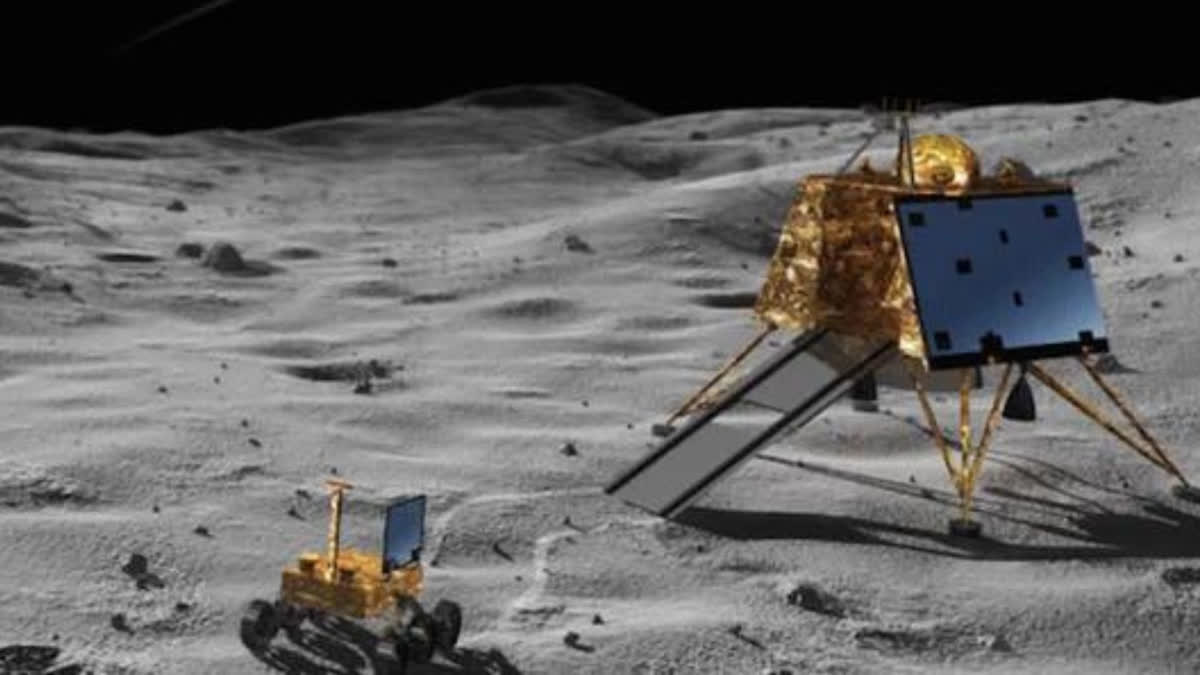Bengaluru : All eyes are on Chandrayaan-3 mission's lander 'Vikram' and rover 'Pragyan' as the soft-landing of the monumental mission to the lunar south pole is scheduled for today evening. What are the immediate tasks of the lander-rover twins that are crucial to the overall success of the mission to the Moon.
ISRO scientists are confident of the effective functioning of Vikram and Pragyan. The Lander has the capability to touch down on the Moon and deploy the Rover which will then carry out in-situ chemical analysis of the lunar surface. The duo have scientific payloads to carry out experiments on the lunar surface. A lot of curiosity is there on the the specifications and functions of the lander and rover. Here are some insights.
The lander has mission life of one Lunar day, which is equivalent to 14 Earth days. It has a mass of 1749.86 kg including Rover. There are four scientific payloads in it. Radio Anatomy of Moon Bound Hypersensitive ionosphere and Atmosphere (RAMBHA) will measure the near surface plasma (ions and electrons) density and its changes with time.
Also Read : India's bid to conquer Lunar South Pole; devotees offer prayers for Chandrayaan-3 success
Chandra's ChaSTE (Surface Thermo physical Experiment) is meant to carry out the measurements of thermal properties of the Moon's surface near polar region. The (ILSA) Instrument for Lunar Seismic Activity will measure seismicity around the Moon landing site and delineate the structure of the lunar crust and mantle. The LRA (Laser Retroreflector Array) from NASA is a passive experiment which is aimed to understand the dynamics of Moon system. The LRA will have a total of 7 sensors including Lander Hazard Detection & Avoidance Camera. The lander has six mechanisms, which are Lander leg, Rover Ramp (Primary and Secondary), Rover, ILSA, Rambha & Chaste Payloads, Umbilical connector Protection Mechanism, and X- Band Antenna.
The rover has a LIBS (Laser Induced Breakdown Spectroscope) Propulsion Module for qualitative and quantitative elemental analysis. The LIBS will help in deriving the chemical composition and infer mineralogical composition to further our understanding of lunar-surface. Alpha Particle X-ray Spectrometer (APXS) will determine the elemental composition such as magnesium, Aluminium, Silicon, Potassium, Calcium, Titanium, Iron) of lunar soil and rocks around the lunar landing site.
Apart from lander and rover, the Propulsion Module (PM) module has one more scientific payload - Spectro-polarimetry of Habitable Planet Earth (SHAPE) payload to study the spectral and Polari metric measurements of Earth from the lunar orbit - as a value addition.



